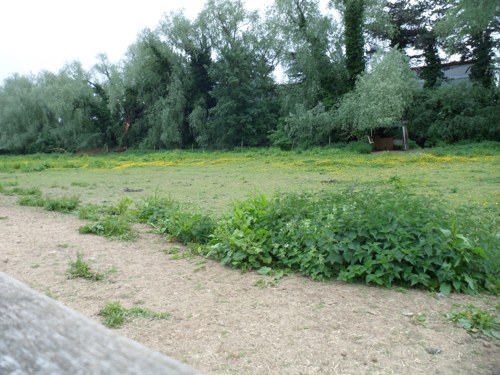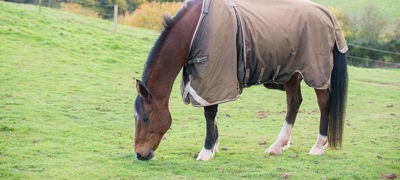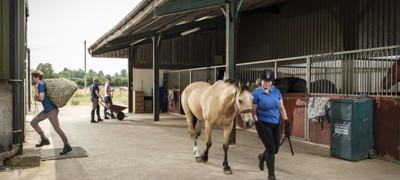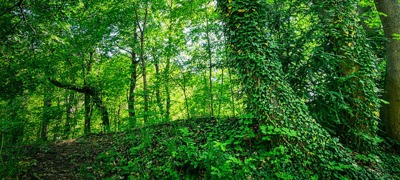Whether your horse lives out 24/7 or is turned out for a few hours a day, good pasture management is vital to your horse’s health. Horses are generally very selective grazers, and in combination with their size, eating habits and those that are shod, they can be quite destructive to the grassland! Therefore, as they can spend 16-18 hours eating per day, investing time and resources into your pasture will have huge benefits in the long-term.
Daily checks and routine jobs
- Make sure that gates and boundaries are secure and that fencing is in good repair
- Provide an adequate supply of fresh clean water
- Remove droppings at least twice a week, or ideally every day, to help control parasite levels and prevent the development of unpalatable latrine areas, which develop into rough areas
- Check for and remove any poisonous plants, rubbish or dangerous objects
- Check for rabbit holes and badger setts – badgers are protected by law so areas surrounding their setts should be fenced off
- Check horses for injuries and monitor weight closely
Factors to consider
There are many elements to having the right pasture for your horse(s).
Minimum land requirements
chevron-down
chevron-up
The BHS recommends a ratio of one horse per 0.4-0.6 hectares on permanent grazing (1-1.5 acres per horse). However, this recommendation can only ever be a guide as there are many factors affecting this, such as:
- Size and type of horse
- Fat score/weight of horse
- Length of time spent stabled or off the pasture
- Time of year
- Quality of the pasture and type of soil
- Number of animals on the pasture
- How well the pasture is managed and cared for
In all circumstances, you must take individual requirements into consideration. It is essential that horses have enough space to help reduce the chances of fighting where several animals are turned out together. Over-grazing, over-stocking and poor management can result in the pasture becoming ‘horse sick’, as shown in the image.

Alternative grazing
chevron-down
chevron-up
Grass is a major contributor of calories in a horse’s diet so managing its intake is fundamental in maintaining good health and welfare. Consideration must be given to the changes in grass growth throughout the year, especially where your horse’s diet may need restricting.
You may like to compare grass growth data by region.
Using alternative grazing systems such as track systems, Equicentral systems or where possible the use of moorland or woodland can be of great benefit in managing your horse’s grass intake.
Alternative grazing systems also encourage your horse to interact more with their environment and other horses in their herd, promoting natural foraging and social behaviours while also increasing your horse’s movement.
Water supply
chevron-down
chevron-up
It is important to ensure that a constant supply of fresh clean water is available in the field. Be aware that the management of this can vary when it comes to summer and winter care. Water has a key role in your horse’s digestive system. If your horse doesn’t have access to any or enough water it can increase the risk of colic and dehydration.
There are some essential requirements that are applicable all year round:
- Water containers must be large enough to provide a constant supply of water for all the horses in the field. Ensure plenty of water is available by checking regularly and topping water up frequently if the containers are not self-filling
- Containers must be sturdy and free from sharp edges
- The water supply must be easily accessible for both horse and keeper, checked daily, cleaned regularly and placed away from trees to avoid falling debris
- If possible, position the water source away from the corners of the field to prevent horses being cornered by aggressive behaviour from other herd members
Natural water supplies such as streams, rivers and ponds are often not suitable. Risks may include water contamination, the water source drying up in hot weather, ingestion of sand (which can increase the risk of sand colic) and accidents due to an unsafe approach to the source. Where natural water supplies are available, ensure the following checks have been made before allowing your horse access:
- Pollution risk
- Low water levels
- Ease of access
- Ensuring horses cannot wander/escape fields.
Where these risks are seen it is advised that the natural water source is fenced off and an alternative supply provided.
Shelter
chevron-down
chevron-up
Horses need access to shelter not just from the winter weather but also during the summer from the sun and flies. Shelter can either be man-made in the form of a field shelter or natural, for example trees or hedges (although a tree that sheds its leaves in the autumn won't provide shelter!). Rugs also provide a degree of shelter for the horse. Horses, particularly cobs and native types, are well adapted to living outdoors all year round with the correct management methods.
Field shelter specifications include:
- Ideally large enough to safely accommodate all horses in the field
- Depth of 3.65m (12ft) and width of 3m-3.65m (10ft-12ft). Extra width of 1.5m (5ft) should be added for each additional horse
- Roofs – there should be a minimum clear space to the eaves of 60-90cm (2-3ft)
- Sturdy construction
- Situated on hard standing or at least a free draining site
- Always seek planning permission from your local council before erecting a permanent field shelter. Be aware that in some areas permission may be required for temporary, moveable shelters.
Hedgerows and Trees
chevron-down
chevron-up
Seasonal care for your pasture
Spring - March to May
chevron-down
chevron-up
- Remove weeds and poisonous plants. Seek expert advice if there is a heavy infestation
- Reseed and roll areas which had become poached and boggy through the autumn/winter
- Harrow to remove lightly rooted weeds and dead grass
- Monitor how much your horse or pony is eating as grass growth increases and presents a possible risk of laminitis
- Soil analysis if not done in autumn
Remember - only take machinery on ground that’s dry enough to prevent damage and compaction.
Summer - Late Spring to August
chevron-down
chevron-up
- Control weeds with the immediate removal of any poisonous plants
- Top the pasture to remove long, stalky grass and rough areas
- Harrow and roll pastures if conditions were too wet in the spring
- Consider shelter availability for the hottest periods of the day. This may be natural trees or hedges or man-made shelter
Autumn - September to November
chevron-down
chevron-up
- Stay alert to acorns and sycamore seeds
- Continue to control ragwort growth
- Maintain existing drainage by keeping ditches clear of plants and debris
- Check water trough pipes and make sure they're insulated ready for the winter
- Plant any new hedges and trees if required; make sure the species are safe for horse paddocks
- Check there’s hard standing around gates and water troughs ready for winter.
- Soil analysis if not done in spring.
Winter - December to February
chevron-down
chevron-up
- Check water source daily for freezing
- Consider shelter availability - natural shelters, such as trees, may now have lost their leaves, meaning man-made shelter may be needed
- Check for holes regularly caused by burrowing animals around the field boundary
- Rest paddocks or designate a field for winter turnout, if possible. Ideally use the paddock with the best drainage
- Seek expert advice on any liming or fertiliser application that may be needed in early spring
Get in touch - we're here to help
The Horse Care and Welfare Team are here to help and can offer you further advice with any questions you may have. Contact us on 02476 840517* or email welfare@bhs.org.uk – You can also get in touch with us via our social media channels.
Opening times are 8:35am-5pm from Monday–Thursday and 8:35am-3pm on Friday.
*Calls may be recorded for monitoring purposes







